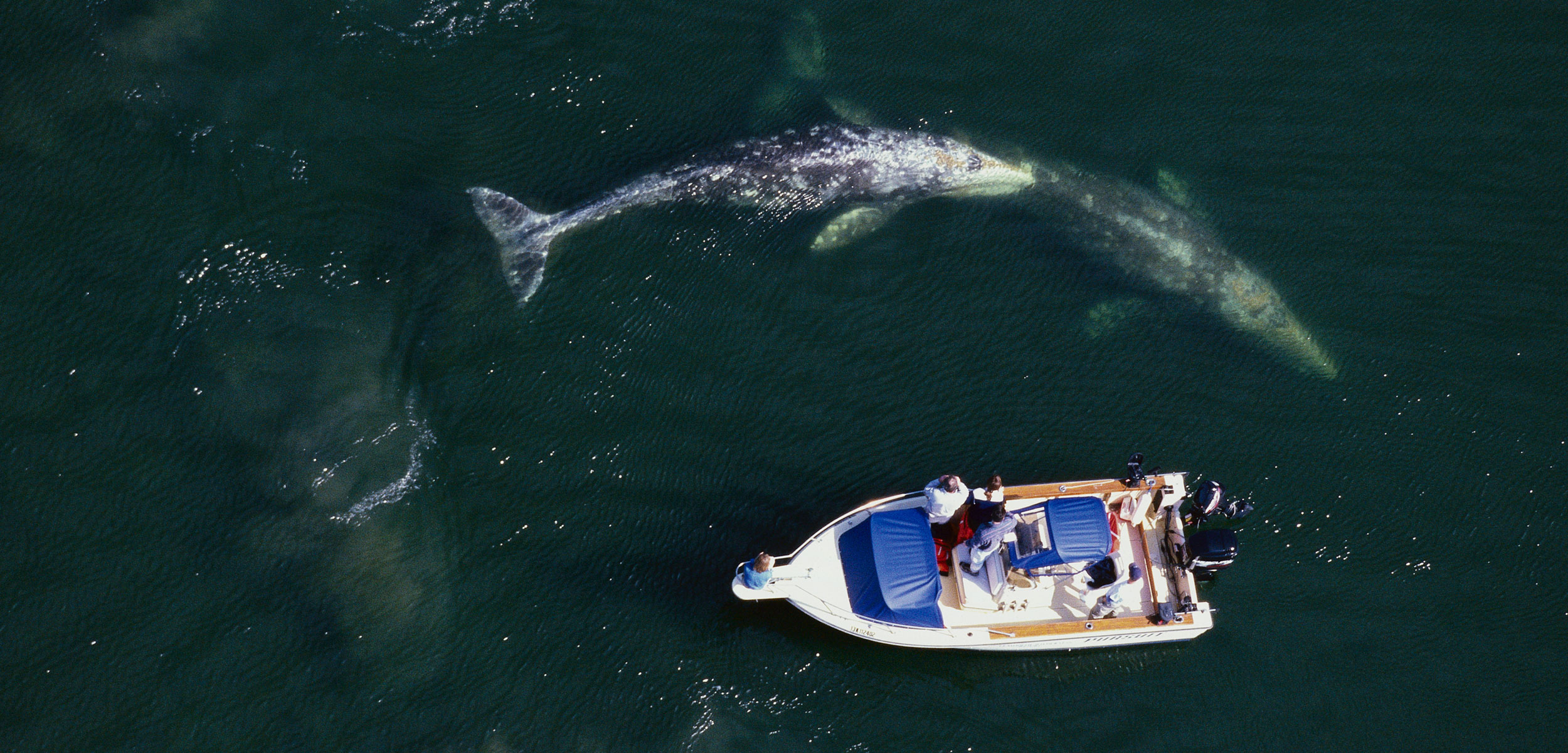Thar She Grows: A New Way to Tell a Gray Whale’s Age
Being able to accurately estimate an animal’s age is an important step in understanding the health of a population.
Article body copy
If you see a gray whale cruising offshore, it’s fairly easy to guess, based on little more than its size, whether it’s an adult or a juvenile. But without digging through a dead whale’s earwax or examining its ovaries, determining age is surprisingly difficult.
A Canadian researcher has now discovered a novel method to eyeball a gray whale’s age that is much less invasive than existing techniques. By analyzing the relationship between whales’ sizes and their ages, Selina Agbayani, a master’s student at the University of British Columbia (UBC) in Vancouver, has plotted growth curves that describe in detail how gray whales change in length and weight as they age.
To develop the growth curves, Agbayani pored over records of whales slaughtered during the commercial whaling era as well as observations from scientific surveys and strandings. She parsed 903 records: 634 provided specifics on age and length and only 15 noted the whale’s weight.
Agbayani’s study reveals that gray whales don’t follow a simple linear pattern as they grow. When a gray whale is born, it’s roughly 4.6 meters long and weighs one tonne—as much as two concert grand pianos. Consuming about 30 liters of its mother’s rich milk a day, the calf rapidly packs on weight. By nine-and-a-half months, the calf has grown to 8.4 meters and 5.7 tonnes. After this initial spurt, the whale weans off milk and its growth slows.
Agbayani’s research shows that, on average, a 10-year-old gray whale weighs 17 tonnes, and at 15 years, it’s closer to 19 tonnes. Gray whales stop growing at around 40 years old, with females maxing out at 13.2 meters and 20.7 tonnes and males at 12.6 meters and 19.8 tonnes.
Age estimates in the historical records are based on evaluations of earwax plugs or ovary scars—approaches that require the whale to be dead. “Every year, baleen whales accrue one band of light and dark earwax,” Agbayani says. “If you pull out the ear plugs and dissect them, you can count the layers like tree rings.” Even this method is not foolproof since the plugs might only be partially intact or the soft wax might disintegrate when removed.
Ovary scars, fibrous masses known as corpus albicans, are a more accurate indication of age. These scars form every two years once a female gray whale reaches sexual maturity at an average eight years old.
Technology now offers a new method to estimate the age of a whale—one that works on living animals.
For some better-studied species, such as southern resident killer whales in the Salish Sea, researchers monitor individuals from birth and track their ages and body conditions. Overhead drone images reveal if a whale starts to grow thin or show other signs of poor health and malnutrition.
Such detailed data is not available for gray whales, which number roughly 20,000 in the eastern North Pacific. But Agbayani says similar aerial photographs, analyzed through the lens of her growth curves, could help biologists assess the health of the population.
Whale authority John Ford, an adjunct professor at UBC and academic adviser to Agbayani, says historical records can yield a “gold mine of useful information,” providing researchers with a better understanding of the life history of whales and a path to their conservation.

